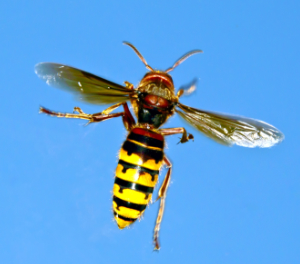Island flightless insects
Darwin’s answer to flightless island Insects

The Bob Dylan song lyric ‘The answer is blowin’ in the wind’ was in a sense Charles Darwin’s answer too. That is, to the question of why so many insects living on islands have lost the ability to fly.
As Monash University biologist Rachel Leihy explained, “Darwin’s position was deceptively simple. If you fly, you get blown out to sea. Those left on land to produce the next generation are those most reluctant to fly, and eventually evolution does the rest. Voilà.”1
However, the famous botanist Joseph Hooker had a substantial argument with the Origin of Species author about his wind idea. And many evolutionary scientists since then have also expressed their doubts.
Hence Monash University researchers’ recent focus on the insects living on sub-Antarctic and Arctic islands, to try to resolve this issue. These islands are the epitome of insect flight loss, and are some of the windiest places on Earth, situated in the ‘roaring 40s’ and ‘furious 50s’ latitudes.

The researchers concluded that none of the ideas proposed by Hooker and other wind-doubters can explain the extent of flight loss in insects on these islands. But Darwin’s wind idea does. Well, subject to a modification: The researchers say that “wind selects for flightlessness through an energy trade-off between flight and reproduction, instead of by displacement from suitable habitats.”2 In other words, it’s not that flying flies get blown away. Rather, they claim it’s ‘cheaper’ for an island fly to walk (to a mate), than fly.
Selection ≠ evolution

But what’s been lost sight of in all this back-and-forth palaver between evolutionists is, where is the ‘evolution’ anyway? That is, evolution in the sense of the grandiose presumption that certain bacteria turned into beetles over millions of years. Such would require new genetic information. But loss of flight in insects is not gain, but loss. Wind might well select for it, as the researchers say—in which case, it’s an example of natural selection.
But natural selection is not the same as evolution, as we’ve pointed out over and over. And it has long been a part of many creationist explanations and models, including for such things as flight loss on windy islands.3 Natural selection can only remove individuals, and thus their genes, from a population, not add new ones. So any inference that such ‘wind’ selection supports evolution (again, just to be clear: the neo-Darwinian notion that microbes became mayflies, monkeys, and mathematicians) simply isn’t justified. Blown away, you might say, by the evidence itself.

Flightlessness in insects that could once fly is undoubtedly the result of one or more mutational defects. These prevent the formation of fully-functional wings and associated musculature. That is, the wing-making information on the DNA is lost or scrambled in some way. On a windy island, these flightless insects are the ones favoured to reproduce. So the damaged genes will be passed to their offspring, and on to subsequent descendants, as the mutated genes are copied from one generation to the next.
So it is not a case of “eventually evolution does the rest. Voilà.” Rather, it’s an example of the world being, as the Bible puts it (Romans 8:19–22), “in bondage to decay”. Voilà.
References and notes
- Monash University, Charles Darwin was right about why insects are losing the ability to fly, sciencedaily.com, 9 December 2020. Return to text.
- Leihy, R. and Chown, S., Wind plays a major but not exclusive role in the prevalence of insect flight loss on remote islands, Proceedings of the Royal Society B: Biological Sciences 287(1940):20202121, 2020, 9 Dec 2020. Return to text.
- See creation.com/beetle-bloopers and creation.com/insect-flightlessness.1098/rspb.2020.2121. Return to text.



Readers’ comments
Comments are automatically closed 14 days after publication.